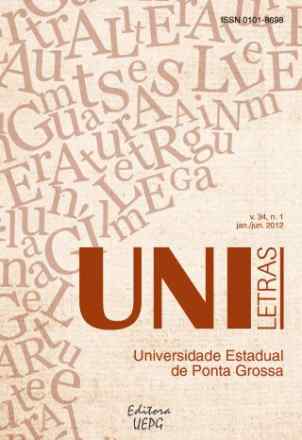A (IN)VISIBILIDADE DAS IDENTIDADES NEGRAS EM LIVROS DIDÁTICOS DE LÍNGUA PORTUGUESA: ANÁLISE INTERCULTURAL DE SABERES EM CIRCULAÇÃO NA SOCIEDADE BRASILEIRA
UniLetras
A (IN)VISIBILIDADE DAS IDENTIDADES NEGRAS EM LIVROS DIDÁTICOS DE LÍNGUA PORTUGUESA: ANÁLISE INTERCULTURAL DE SABERES EM CIRCULAÇÃO NA SOCIEDADE BRASILEIRA
Autor Correspondente: Jakelliny Almeida Santos | [email protected]
Palavras-chave: Análise de livro didático, interculturalidade, identidade negra.
Resumos Cadastrados
Resumo Português:
Este artigo discute os princípios ideológicos e socioculturais que orientam as práticas de ensino de línguas em dois livros de português (língua materna e língua adicional) a fim de analisar como a linguagem contribui para a construção de identidades sociais. Os conceitos de interculturalidade (WASH, 2009), construção identitária (HALL, 2007; GOMES, 2003) e interseccionalidade (CRENSHAW, 2002; AKOTIRENE, 2019) subsidiaram a comparação entre os livros didáticos e possibilitaram observar como o racismo estrutural da sociedade brasileira está representado em cada um deles. Com base em uma pesquisa documental, de cunho interpretativista, constituiu-se um corpus com textos, imagens e atividades que tematizaram a identidade negra (GOMES, 2003) nas duas obras. Os resultados mostram que as identidades negras possuem espaço restrito em ambos os livros, contribuindo para a manutenção da invisibilidade das identidades negras, e que apenas o livro destinado aos estrangeiros apresenta pessoas negras em situação de ascensão social. Isso nos inquieta a encontrar alternativas para discutir a diversidade que caracteriza a sociedade brasileira na escola.
Resumo Inglês:
This article discusses the ideological and sociocultural principles that guide language teaching practices in two Portuguese textbooks (Mother Language and Additional Language) to analyze how language contributes to the construction of social identities. The concepts of interculturality (WASH, 2009), identity construction (HALL, 2007; GOMES, 2003) and intersectionality (CRENSHAW, 2002; AKOTIRENE, 2019) supported the comparison between textbooks and they made it possible to observe how the structural racism of Brazilian society is represented in each of them. Based on documentary research, of an interpretative nature, a corpus was constituted with texts, images and activities that addressed the black identity (GOMES, 2003)in the two works. The results show that black identities have restricted space in both books, contributing to the maintenance of the invisibility of black identities, and that only the book for foreigners presents black people in a situation of social ascension. This worries us to find alternatives to discuss the diversity that characterizes Brazilian society at school.

